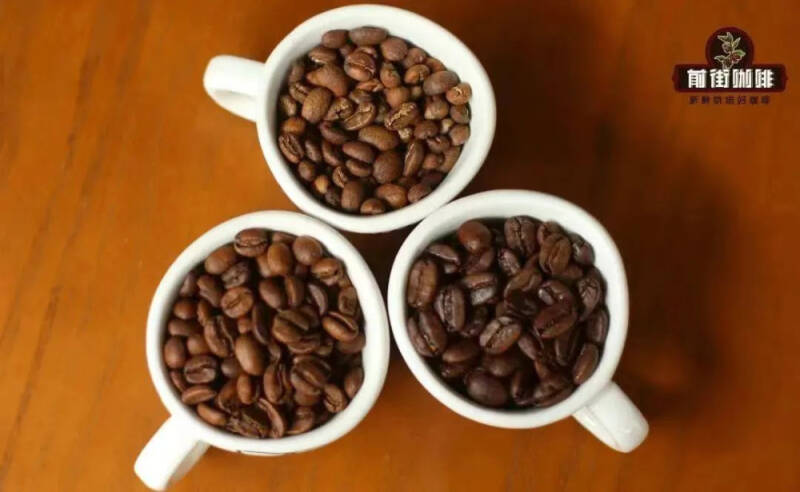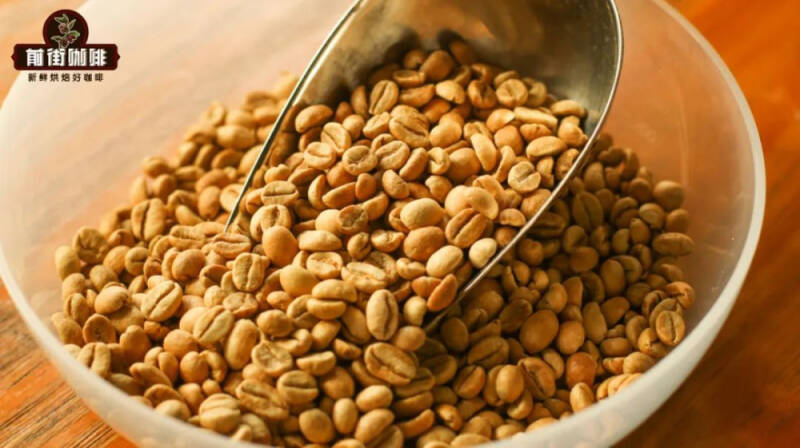Novice rookies have to learn the technical terms of coffee until! By pass, Crema, Rose Summer, Sakuran, what are these?
It is reasonable that each industry will have a unified title for some specific things, which we describe as "technical terms"! Of course, coffee is no exception. When many baristas or friends are talking, it is easy to use these terms, once we do not understand the meaning, it will easily make a difference in communication! therefore! What Qianjie wants to answer today is some of the more common professional terms in our coffee industry. In addition, the subtitle of each term is accompanied by a link to a more detailed answer article, hoping to help you learn and communicate with coffee.
Coffee beans

Arabica | Arabica: is one of the three largest coffee varieties in the world. It originated in Ethiopia, and until the 18th century, it was thought to be of Arab origin, because it had been monopolized by Arabs at that time! Therefore, botanist Linnai named it "Coffea arabica L." when he named it using the two-butyl method, he named it "Arab" as its origin. If the teacher of Linnai knew that it originated from Ethiopia before naming it, then the name of this variety would not be Arabica ~ Robusta | Robusta: it is one of the three major varieties, originating from the Congo Basin on the west coast of Africa, referred to as Luodou. It is widely planted because of its strong disease resistance and insect resistance. However, because it contains too much caffeine, resulting in poor flavor, it is often used in commercial beans or as raw materials for instant and freeze-dried coffee products. G1/G2/G3: is the grade mark of raw beans in most coffee producing areas! It is worth noting that this grade does not refer to the flavor difference of coffee beans, but to the number of defects! In a sample of 300g, give the bean a grade according to the number of defective beans!

PB: refers to a special appearance of coffee beans. Generally speaking, a coffee fruit contains two raw coffee beans. And some malnourished coffee fruits can only give birth to a special shape of coffee beans! But because of its unique appearance, it is singled out by people and sold at a high price of PB grade! Treatment: refers to the post-processing of raw coffee beans after harvest. It is the operation of removing all impurities except raw beans from the coffee fruit. At the same time, it is also an important link that affects the flavor of coffee! Rosa: is the king of today's coffee dynasty! Because this kind of bean has extremely rich flower and fruit aroma, in the case of high popularity and quality, the price also goes up! At present, there are two ways to name Rosa on the market, one is the "Gesha" of Ethiopia, and the other is the "Geisha" of Central America represented by Panama. Sakuran: a native species produced in remote areas of Ethiopia, ranked first because it beat many rose summers in a year's competition. Therefore, after the introduction of China, raw bean merchants gave it the name "Sakuran" (the top performer in Japanese geisha), trying to become the first bean to defeat geisha. Coffee planting belt: coffee cultivation has very high requirements on the climate environment, therefore, not all land can grow coffee! These places on the earth between latitude 25 °south and latitude 25 °north have a suitable climate, without Frosts Descent, and the annual rainfall is very abundant, which is very suitable for the cultivation of coffee, so it is called the "golden planting belt" of coffee!
Heirloom | Native species: refers to the thousands of coffee varieties that have not yet been identified in Ethiopia! This is the name specially set up by the Ethiopian government to prevent people from stealing coffee seeds! A bag of native coffee beans on the market will contain countless different varieties of coffee beans, so there is often a significant difference in size!
Coffee senses
Cup test: it is a way of tasting coffee! Release the taste of the coffee with the least human intervention extraction, which can maximize the original flavor of the coffee! Sipping: it's a way to drink coffee! Quickly inhale and atomize the coffee by closing your lips, which cools the coffee as quickly as possible, allowing the senses to fully experience the flavor of the coffee! Dry fragrance: refers to the aroma of coffee beans after grinding, which is more obvious than that of coffee beans before grinding! Wet fragrance: refers to the aroma released after coffee beans are ground into powder and come into contact with water to form coffee liquid!
Flavor: refers to what we can feel and associate with the aroma and taste of food in the process of tasting the coffee liquid! Yu Yun: it refers to the aroma and taste of coffee left in the mouth after swallowing coffee! Body: refers to the taste of coffee, that is, the "weight" of coffee liquid in the mouth.
Make coffee by hand
Hand ABC set: refers to the ACAIA electronic scale, Brewista hand pot, C40 commander hand grinder, because of its excellent quality, coffee lovers called the three giants of the hand industry! Extraction: means to use water as the medium to dissolve the aromatic substances in the coffee! Brewing, soaking and dripping are all different ways of coffee extraction! Under-extraction / over-extraction: refers to the two negative manifestations of the coffee liquid after the coffee has been extracted. The golden cup experiment pointed out that the extraction rate of delicious coffee is generally in the range of 18% to 22%, less than 18% is insufficient extraction, and more than 22% is excessive extraction! Of course, these figures do not really represent whether a cup of coffee is good or not, because whether a cup of coffee is good or not depends on us to tell whether it is good or not.
Brewing ratio: if it is not specified, it refers to the ratio of coffee powder to the amount of water used during extraction! That's our old powder-to-water ratio. For example, 1:15 means that for every 1g of coffee powder used, use 15ml water for extraction! Steaming: refers to the initial stage of extraction, is to wet the coffee powder layer with a small amount of hot water and let it exhaust, which will enable the subsequent hot water to have better extraction conditions! Under normal circumstances, twice the amount of water injected into the powder will be steamed for 30 seconds! By pass: it means bypass water, which is a special coffee extraction scheme! It roughly means that during brewing, part of the water will not participate in the extraction, but will be directly integrated with the extracted coffee liquid! To put it more simply, it is mixed with water! Depending on the situation, its role will also change!
Italian Coffee
Espresso: refers to the coffee extracted by the espresso machine! Also refers to the use of this coffee as a base to produce a variety of coffee products! Combo: it means combination or set meal. Combo in coffee refers to making more than two different drinks with one bean and assembling it together, which is called Combo. SOE: the full name is "Single Origin Espresso", which refers to espresso made from coffee beans from a single origin, so don't ask questions like "can SOE make it by hand?" Crema: refers to the golden foam floating on the surface after Italian concentrated extraction, which is commonly referred to as "oil" in our country. It is mainly composed of carbon dioxide and aromatic substances of coffee! Because it is mixed with very fine powder, so taste it alone will find it with a certain bitter taste!
Blended coffee: refers to a coffee bean product that uses more than two producing area beans to combine! Generally speaking, the reason for matching is mainly from high performance-to-price ratio, high stability, high playability! Bean cultivation: refers to the period of time in which the full carbon dioxide in the coffee bean is discharged by itself by placing the coffee bean. The advantage of this is that coffee beans that emit a lot of carbon dioxide can be better extracted by hot water to get a fuller coffee flavor! Generally speaking, the cultivation period of hand-washed coffee beans is 4-7 days, and that of Italian coffee beans is 7-15 days.
-END-
Front Street Cafe
No. 10 Baoqian street, Yandun road, Dongshankou, Yuexiu district, Guangzhou, Guangdong province
Important Notice :
前街咖啡 FrontStreet Coffee has moved to new addredd:
FrontStreet Coffee Address: 315,Donghua East Road,GuangZhou
Tel:020 38364473
- Prev

Big counterattack! 9.9 Coffee "beat" Starbucks China
▲ Click to follow | Coffee Workshop of Daily boutique Coffee Culture Magazine has passed 2023, which is an extraordinary year for Ruixing, a local chain coffee brand. During this year, Ruixing set a record of 100 million daily sales by virtue of the Maotai latte fire, which made it impossible for more.
- Next

How should I buy the brewing utensils needed for hand-made coffee? How to choose hand punch, filter cup and electronic scale?
Once you have experienced the beauty of hand-made coffee, it is easy for people to get caught up in it. Most of the hand flushes that people drink at first are made by baristas in coffee shops or by friends around them. Over time, the coffee brewed by others will be difficult to meet their own needs. So, most of it,
Related
- What effect does Italian American coffee with filter paper have? Will coffee taste better if it is put on filter paper at the bottom of the powder bowl?
- What is the color difference in coffee beans? What are the characteristics of honey processed coffee beans? Why are the anaerobically treated coffee beans uneven in color?
- How does novice Xiaobai quickly get started and make coffee? Newbies learn to make coffee by hand and share the specific steps and process process!
- Costa tea has a shelf life of 100 years?! Expert: Unable to verify
- It's a huge uproar! American milk addition was rejected by Manner employees?!
- Mocha pot coffee bean recommendations| How fine and how much powder should be used for grinding? What parameter ratios do I need to use to make milk with Mocha pot coffee?
- What are the characteristics of the world's top ten coffee beans treated with Costa Rica honey? How to make black honey kadura from Tarazhu Pilon Processing Plant taste good?
- How to make deep-roasted coffee? What grinding water temperature does authentic Jamaica Blue Mountain No. 1 coffee use to brew it well?
- Selected high-grade rose summer coffee flavor tasting guide Why Panama rose summer has the aroma of flowers and fruits
- What equipment does a novice Xiaobai need to buy to learn to make coffee? Filter cup electronic scale bean grinder manual flushing pot purchase guide

